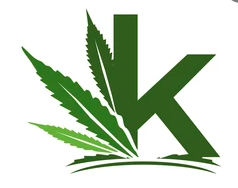News
From Fiber to Fuel: Harnessing the Versatility of Hemp in Sustainable Industries
In recent years, there has been a growing recognition of the incredible versatility and sustainability of hemp. Often overshadowed by its psychoactive cousin, hemp is now emerging as a game-changer in various industries, from textiles and construction to biofuels and beyond. With its multitude of uses and minimal environmental impact, hemp has become a beacon of hope for a more sustainable future. In this article, we will delve into the remarkable ways in which hemp is being harnessed as a valuable resource, transforming traditional industries and paving the way for a greener tomorrow.
Revitalizing Fashion and Fabric

The textile industry has long been associated with detrimental effects on the environment, including excessive water consumption, chemical pollution, and contribution to landfill waste. However, hemp is emerging as a sustainable alternative that can revitalize the fashion and fabric sector. Hemp fibers are incredibly durable and strong, surpassing many conventional fabrics in their longevity. This makes hemp an excellent choice for creating long-lasting clothing, accessories, and home textiles that can withstand wear and tear. Moreover, the cultivation of hemp requires significantly fewer pesticides and water compared to other crops, making it an environmentally friendly choice. By utilizing hemp textiles, the fashion industry can reduce its ecological footprint and promote sustainable practices. The versatile applications of hemp textiles range from everyday garments to luxury fashion items, interior furnishings, and even industrial products. The introduction of hemp-based textiles into the market has the potential to not only revolutionize the fashion industry but also encourage consumers to make more sustainable choices. By embracing hemp, we can foster a fashion culture that prioritizes durability, eco-friendliness, and ethical sourcing, leading to a positive impact on the environment and the well-being of communities involved in the production process.
Building a Greener Future: Hemp in Construction

Hemp is proving to be a game-changer in the construction industry as a sustainable alternative that holds great promise for building a greener future. One of the most notable innovations is hempcrete, a mixture of hemp fibers, lime, and water that is revolutionizing the way we construct buildings. Hempcrete offers a plethora of benefits that make it a superior choice over traditional building materials.
First and foremost, hempcrete boasts excellent insulation properties. The porous nature of hemp fibers creates a structure that efficiently regulates temperature and moisture, resulting in a comfortable living environment year-round. This natural insulation reduces the need for energy-intensive heating and cooling systems, thus decreasing energy consumption and lowering carbon emissions.
Hempcrete is highly breathable, allowing moisture to pass through the material. This breathability prevents the accumulation of condensation and mold growth, enhancing indoor air quality and promoting a healthier living environment. By choosing hempcrete, builders can prioritize the well-being of occupants and contribute to a more sustainable future.
One of the remarkable aspects of hempcrete is its ability to sequester carbon dioxide (CO2). Hemp plants absorb CO2 from the atmosphere during their growth cycle, and when incorporated into hempcrete, this carbon remains trapped within the material. As a result, buildings constructed with hempcrete effectively store carbon, acting as a carbon sink and contributing to the reduction of greenhouse gas emissions.
Hemp’s potential as a renewable resource in the construction sector extends beyond hempcrete. Hemp fibers can be used in various applications, including insulation mats, wall panels, and roofing materials. These fibers offer exceptional strength, durability, and fire resistance, making them ideal for structural components. By utilizing hemp fibers in construction, builders can reduce their reliance on non-renewable resources and contribute to a more sustainable and circular economy.
Hemp cultivation requires minimal pesticides, herbicides, and fungicides due to its natural resistance to pests and diseases. This low-input crop reduces the environmental impact associated with chemical use, further enhancing the sustainability of hemp as a construction material. Additionally, hemp is a fast-growing plant that yields a high biomass, providing an abundant and renewable source for construction materials.
As hempcrete gains recognition and acceptance in the construction industry, there is growing momentum toward incorporating this eco-friendly material into mainstream building practices. However, challenges such as regulatory frameworks and limited infrastructure for hemp processing and production still need to be addressed to facilitate widespread adoption. Nonetheless, the potential of hemp in construction is undeniable, offering a greener and more sustainable future for the built environment.
Hempcrete represents a significant step towards building a greener future. Its exceptional insulation properties, breathability, and ability to sequester carbon dioxide make it a sustainable choice for construction. By reducing energy consumption, promoting healthier indoor environments, and mitigating greenhouse gas emissions, hempcrete showcases the potential of hemp as a renewable resource in the construction sector. As the industry embraces this innovative material, we move closer to creating buildings that not only meet our needs but also contribute to a more sustainable and resilient world.
Paving the Way for Sustainable Energy

The global pursuit of renewable energy has prompted researchers to explore innovative solutions, and hemp is emerging as a promising contender in the field of biofuels. Hemp seeds, renowned for their nutritional value, also contain oil that can be transformed into biodiesel—a sustainable and eco-friendly alternative to fossil fuels. One of the remarkable advantages of hemp as a biofuel source is its rapid growth and high biomass yield. Hemp plants have a remarkable ability to flourish in diverse climates and require minimal water, pesticides, and fertilizers. This makes hemp an attractive candidate for large-scale cultivation and biofuel production.
The potential impact of hemp biofuels is substantial. By converting hemp oil into biodiesel, we can significantly reduce greenhouse gas emissions and decrease our dependence on finite fossil fuel reserves. Biodiesel derived from hemp has a lower carbon footprint compared to conventional diesel, as it releases fewer harmful pollutants into the atmosphere. Additionally, hemp biofuels have the advantage of being biodegradable, further contributing to a cleaner environment.
Hemp’s versatility extends beyond its oil-rich seeds. The plant’s fibrous stalks, typically used in textiles and construction materials, can also be utilized for biofuel production. Hemp biomass can undergo a process called pyrolysis, where it is heated in the absence of oxygen, resulting in the production of bio-oil, syngas, and biochar. Bio-oil obtained from hemp biomass can be further refined to create transportation fuels, while syngas can be utilized as a renewable energy source.
The cultivation of hemp for biofuel production offers additional environmental benefits. Hemp plants have a unique ability to absorb and sequester carbon dioxide from the atmosphere, acting as a carbon sink. This further contributes to mitigating the impact of greenhouse gas emissions and combating climate change. Compared to other crops, hemp requires fewer agrochemical inputs, reducing the risk of water pollution and soil degradation.
There are challenges to overcome before hemp biofuels can become widely adopted. The infrastructure for large-scale hemp cultivation and biofuel production needs to be developed, including refining processes and distribution networks. Additionally, government policies and regulations play a vital role in supporting the growth of the hemp biofuel industry.
Hemp biofuels hold tremendous potential in paving the way for a sustainable energy future. With its rapid growth, high biomass yield, and the ability to sequester carbon dioxide, hemp offers a renewable and environmentally friendly alternative to conventional fuels. By investing in research, development, and infrastructure, we can unlock the full potential of hemp biofuels and accelerate the transition toward a greener, more sustainable energy landscape.
A Step Towards a Greener Future

Plastics have become one of the biggest environmental challenges of our time. The improper disposal of plastics leads to pollution, adversely affects ecosystems, and poses a threat to marine life. As we search for sustainable alternatives, hemp emerges as a promising solution, particularly in the form of hemp-based bioplastics. These bioplastics are derived from hemp fibers or oils and offer numerous advantages over traditional plastics. One of the key benefits is their biodegradability, meaning they can break down naturally and minimize environmental harm. Unlike conventional plastics that can take hundreds of years to decompose, hemp-based bioplastics can biodegrade within a few months to a few years, depending on the specific composition. This characteristic alone significantly reduces the burden on landfills and oceans.
Another advantage of hemp-based bioplastics is their renewable nature. Hemp is a fast-growing crop that requires minimal pesticides and water compared to many other crops used in conventional plastic production. Its ability to reach maturity in a short period allows for more frequent harvests, making it a highly sustainable raw material. By using hemp as a renewable resource, we can reduce our reliance on fossil fuels, which are the primary source of traditional plastics.
Hemp-based bioplastics possess desirable properties for various applications. They are known for their strength, durability, and flexibility, making them suitable for a wide range of products, including packaging materials, disposable cutlery, automotive parts, and even medical devices. Hemp fibers can be processed into different forms, such as composites or films, to meet specific requirements for strength, rigidity, or elasticity. This versatility allows hemp-based bioplastics to compete with conventional plastics while offering a more sustainable choice.
However, despite its potential, the widespread adoption of hemp-based bioplastics faces several challenges. One significant hurdle is the existing infrastructure for conventional plastics. The manufacturing processes, supply chains, and recycling systems are predominantly built around traditional plastics, creating barriers to the integration of hemp-based alternatives. Additionally, hemp cultivation and processing regulations vary across regions, posing limitations on the scalability of hemp-based bioplastics production. Addressing these challenges requires investment in research and development, policy support, and collaboration between industries, governments, and environmental organizations.
Nevertheless, progress is being made in hemp-based bioplastics research and development. Scientists and innovators are exploring ways to optimize material properties, improve production processes, and enhance the compatibility of hemp-based bioplastics with existing systems. There is also a growing awareness and demand for sustainable alternatives among consumers, which can drive the market for hemp-based bioplastics.
Hemp-based bioplastics hold immense potential in reducing plastic waste and moving towards a greener future. Their biodegradability, renewability, and versatile properties make them an attractive alternative to traditional plastics. While challenges exist, ongoing research and increasing awareness are paving the way for the widespread adoption of hemp-based bioplastics. By embracing this sustainable solution, we can take a significant step towards mitigating the environmental impact of plastics and creating a more sustainable and resilient world.
Embracing Hemp
Hemp’s versatility and sustainability make it a true champion in the realm of sustainable industries. From textiles to construction, biofuels to plastics, this plant has the potential to transform multiple sectors and mitigate the negative environmental impact associated with traditional practices. By embracing hemp and its diverse applications, we can pave the way for a greener future, where sustainability and innovation go hand in hand. The time to harness the power of hemp is now, as we work towards a more sustainable and resilient world.
- Exploring cannabis or hemp and Their Contested Histories - 13 May 2024
- Exploring weed for nausea relief - 12 May 2024
- The Secrets of cannabis hindu kush: From Ancient Origins to Contemporary Cultivation - 10 May 2024



























